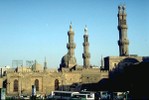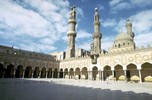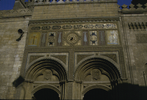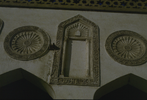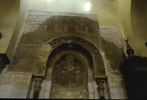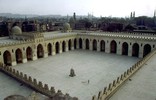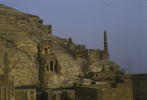Previous Lecture | Next Lecture
Concepts
The Fatimid History of al-Azhar Mosque:
- 970: Jawhar al-Siqilli, the commander of the Fatimid army, lays the foundation of the mosque of al-Qahira (later al-Azhar).
- 972: First Friday prayer held at the mosque.
- 988: First organized teaching at al-Azhar, 35 scholars are housed nearby and paid by the Fatimid state to teach the Isma`ili doctrine.
Al-Hakim bi Amr Allah: (996-1021) The third Fatimid caliph in Egypt and perhaps the most enigmatic and most controversial.
- 1009: Caliph al-Hakim establishes a Waqf for the mosque.
- 1035: First renovation of the mosque by caliph al-Amir.
Ya`qub ibn Killis: The vizier and able administrator of al-Aziz and the designer of early Fatimid processions. He formalized the role of the imam as the supreme head of the community. He was also the first to regularize the educational function of the congregational mosque in Cairo.
- 1129: Caliph al-Hafiz refurbishes the mosque and adds the four porticoes around the courtyard with their keel-arches.
Characteristics of Fatimid mosque architecture:
- The use of projected portals and domes over mihrabs for ceremonial purposes.
- The use of keel-shaped arches in porticoes and arcades.
- The profusion of fine stucco decoration, especially in mihrabs and qibla walls.
- The dependence on iconographic inscriptions, especially on the entrance facade.
Al-Hakim Mosque: Built between 990 and 1003 just outside the walls of al-Qahira, and named after al-Hakim, the third Fatimid caliph in Egypt.
The Mosque of al-Lu'lu'a: (1015-16) One of many small mosques on the Muqattam cliff attributed to al-Hakim.
Monuments

